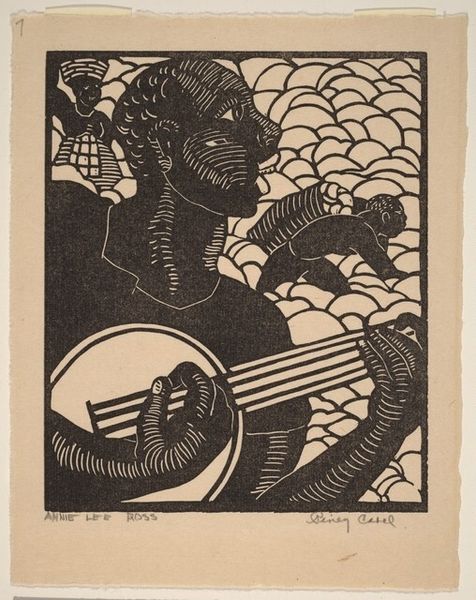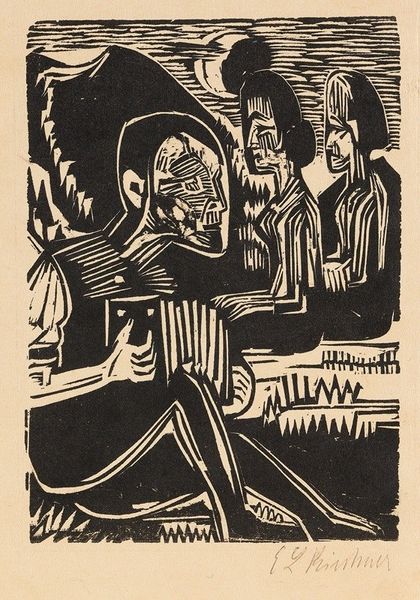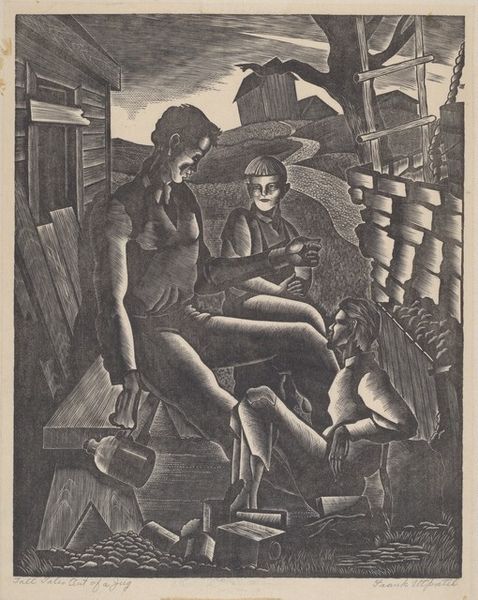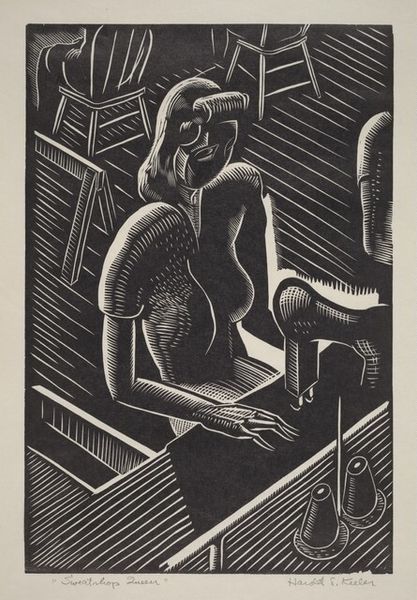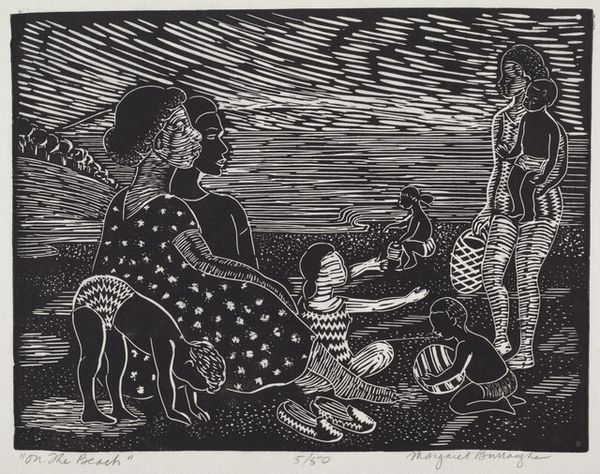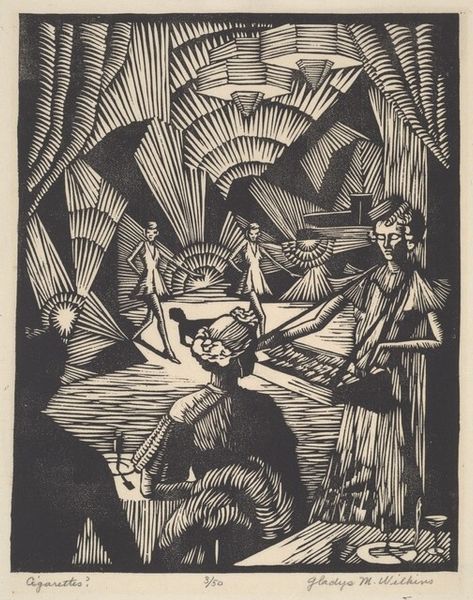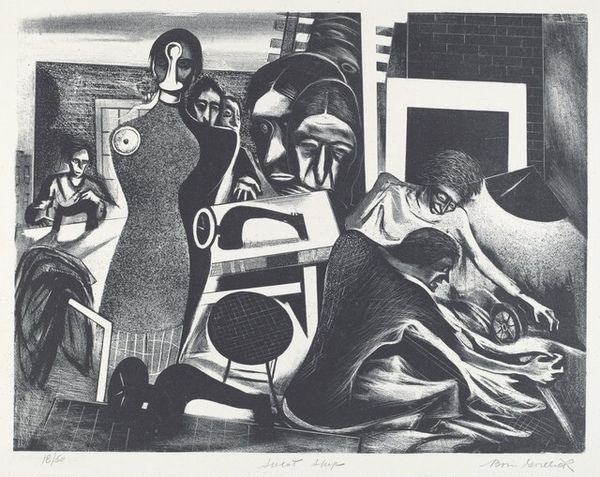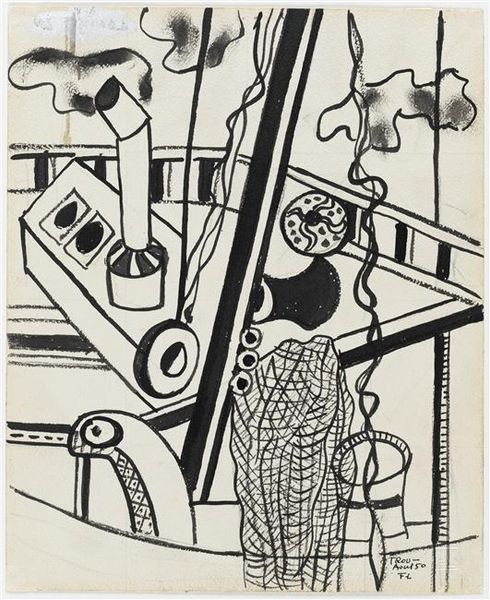
print, woodcut
#
narrative-art
# print
#
landscape
#
figuration
#
social-realism
#
woodcut
#
realism
Dimensions: plate: 322 x 247 mm sheet: 400 x 275 mm
Copyright: National Gallery of Art: CC0 1.0
Curator: Shelby Shackelford’s woodcut, "Rust Cotton Picker Comes to the South," created in 1936, presents a stark visual narrative. My immediate response is its intense emotional charge, the use of high contrast imbuing the scene with a somber, almost ominous quality. Editor: Yes, there's a palpable tension here. And as a print, a woodcut, it’s all about the material process, right? The labor involved in carving the block, the physical act of transferring the image, speaks directly to the labor depicted within it. I imagine the artist meticulously carving out each shape to get to that intensity of light and shadow. Curator: Absolutely. Consider the central figure, his gaze heavy with a sense of weariness, perhaps resignation. Shackelford masterfully utilizes this single figure to convey complex socio-economic themes. This, of course, can be interpreted with respect to centuries-long, heavy associations between cotton production and exploited labor. The cotton becomes almost a character itself, its soft, white masses in harsh juxtaposition with the machinery of this new world that approaches in the background. Editor: You’re right. Look at the composition – the artist contrasts the hand-picked cotton with what’s probably a mechanical cotton picker on a platform looming over him and those cotton bolls laid to dry on the land, suggesting an uncertain future. This new technology will fundamentally alter the material reality of their lives. The woodcut medium itself—historically linked to accessible printmaking—adds another layer. Curator: Exactly! It’s as if Shackelford understood that by using the material process of her woodcut, she could allude to deep-seated historical forces – a world where, yes, labor is not always rewarded or valued, but yet retains some nobility. Do you notice the symbol of the smoke stack far in the background? Even here, it represents looming pollution of all sorts, material and psychological, while also signaling the coming wave of a New South that will come whether her central figure welcomes it or not. Editor: I'd add that the black and white medium flattens the whole image to emphasize the design and allow the contrast in light and dark to represent good vs bad in this image of man and machine! It certainly adds a crucial historical context and meaning to it all. Thanks! Curator: An enlightening material reading that beautifully complemented its symbolic potency.
Comments
No comments
Be the first to comment and join the conversation on the ultimate creative platform.
